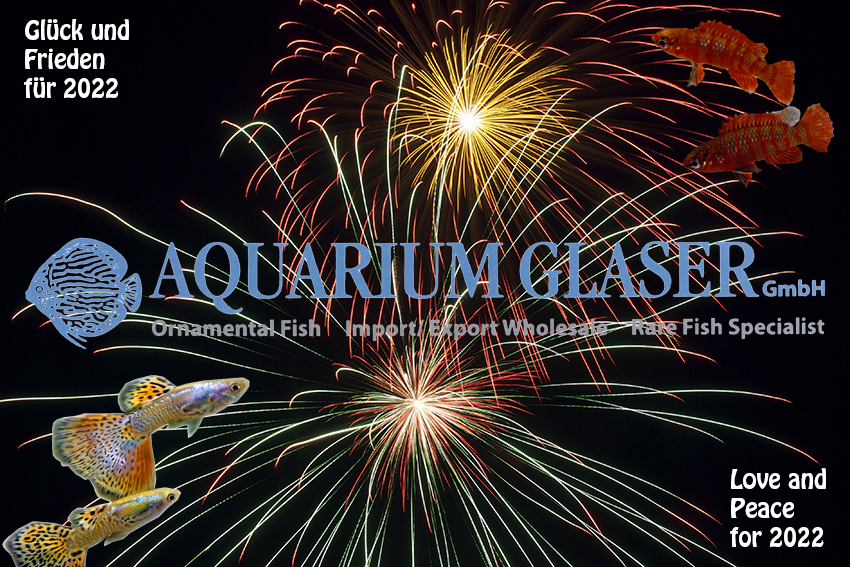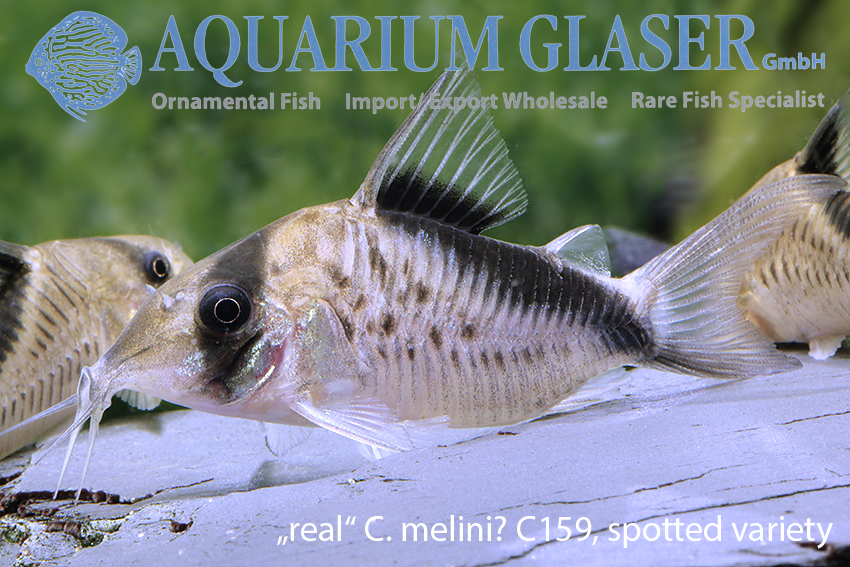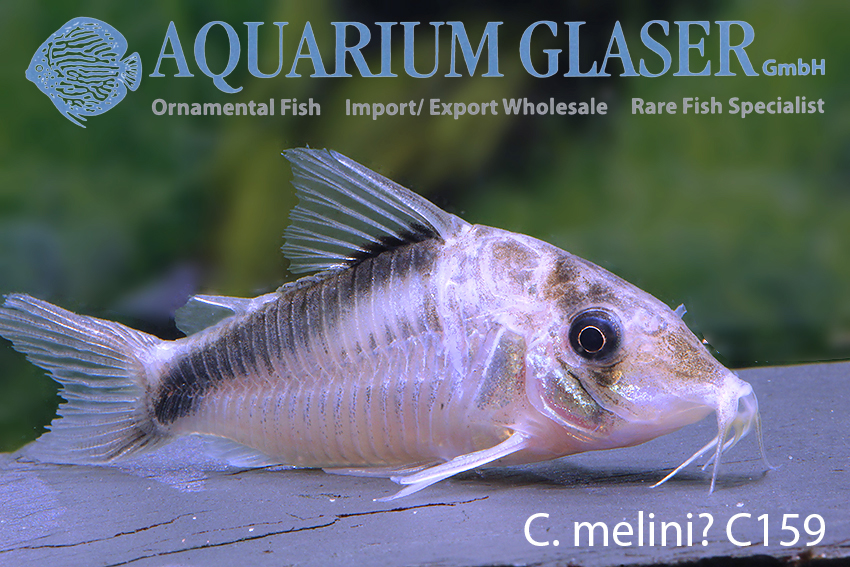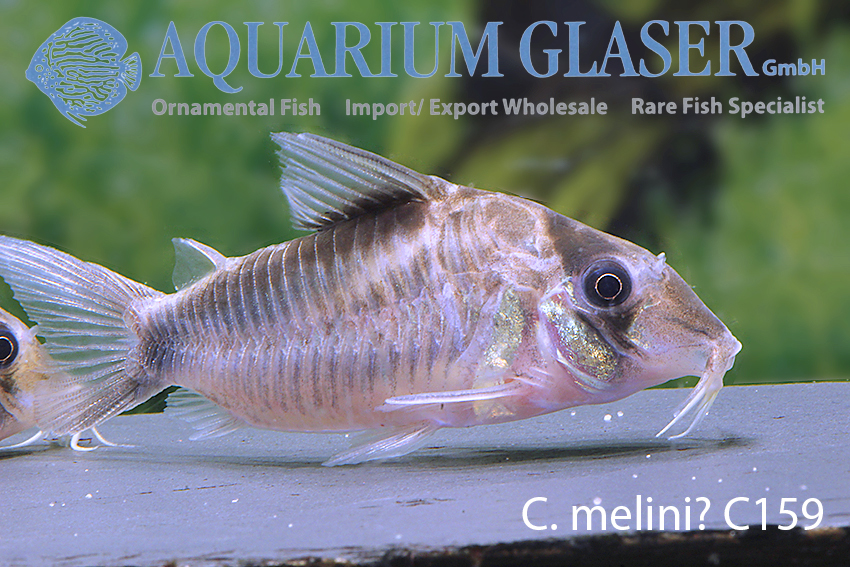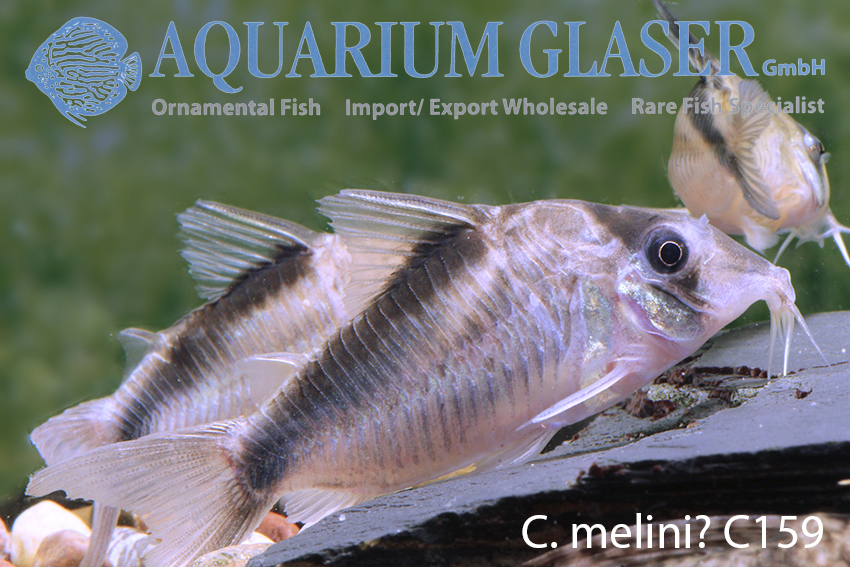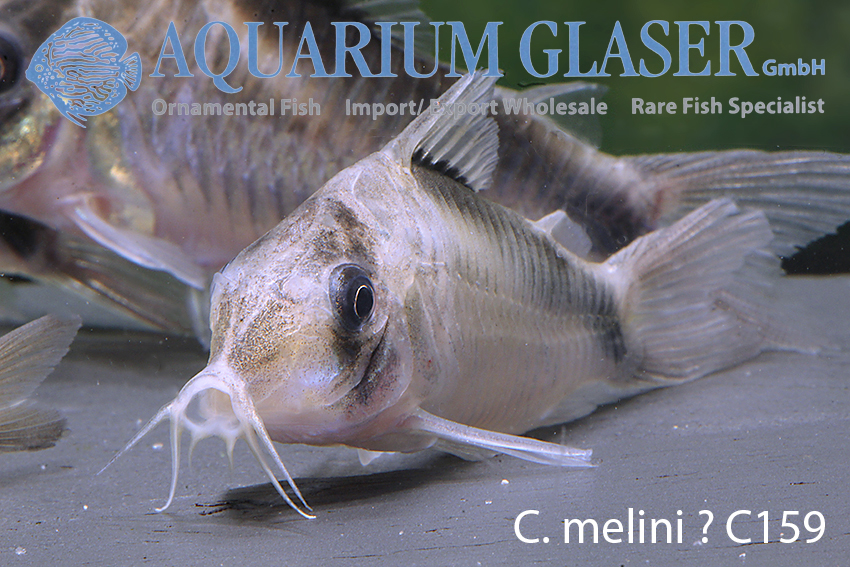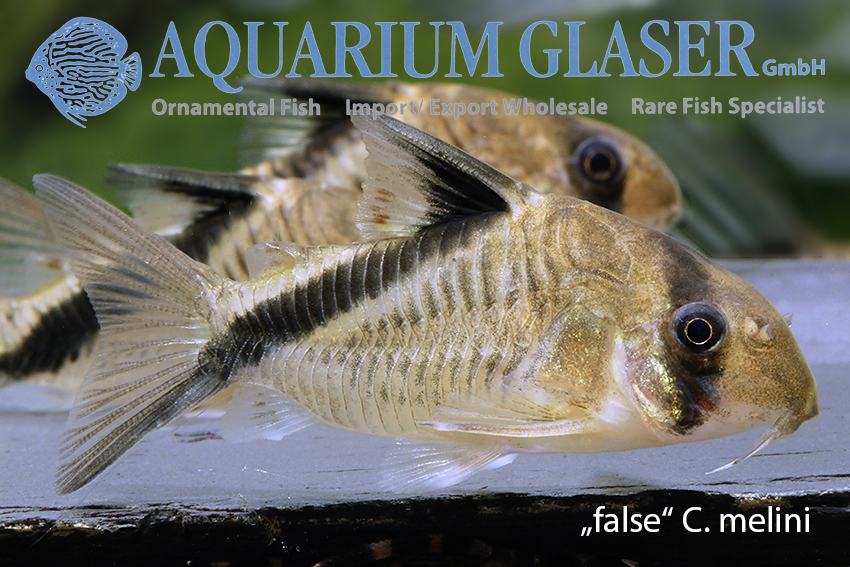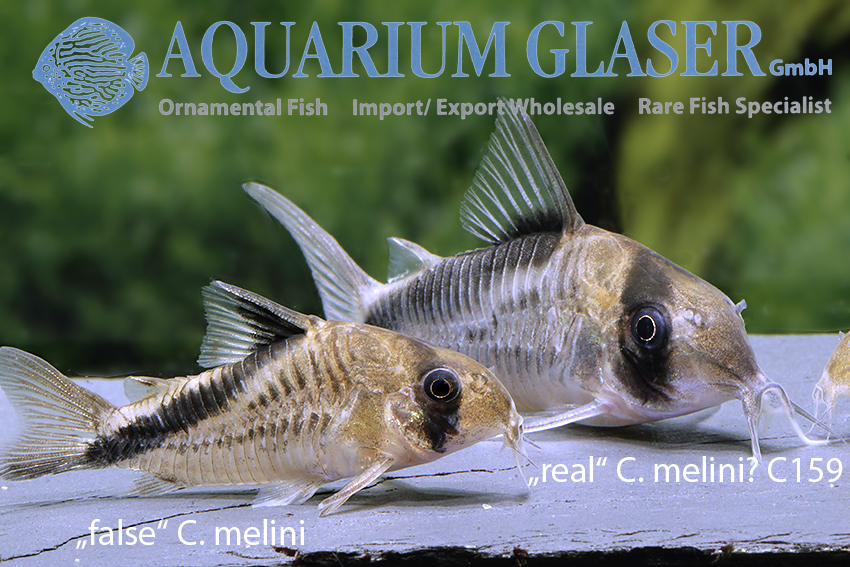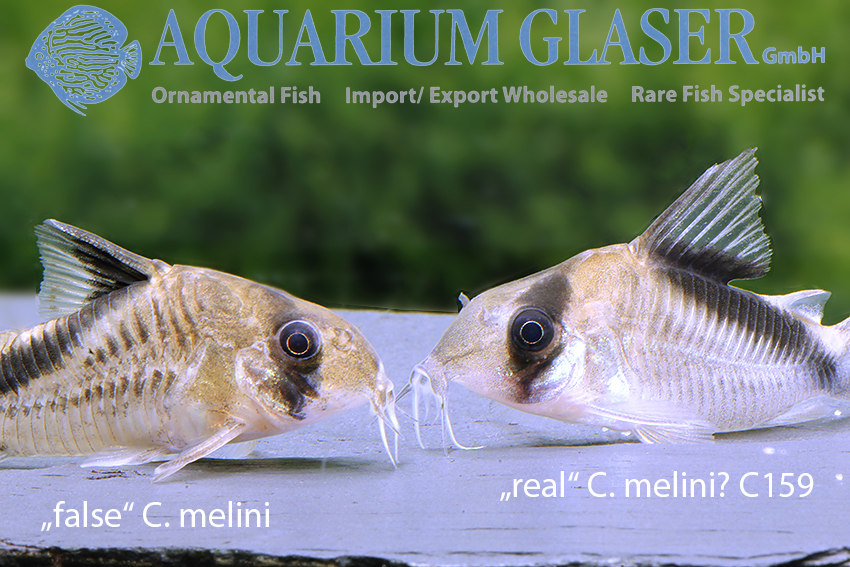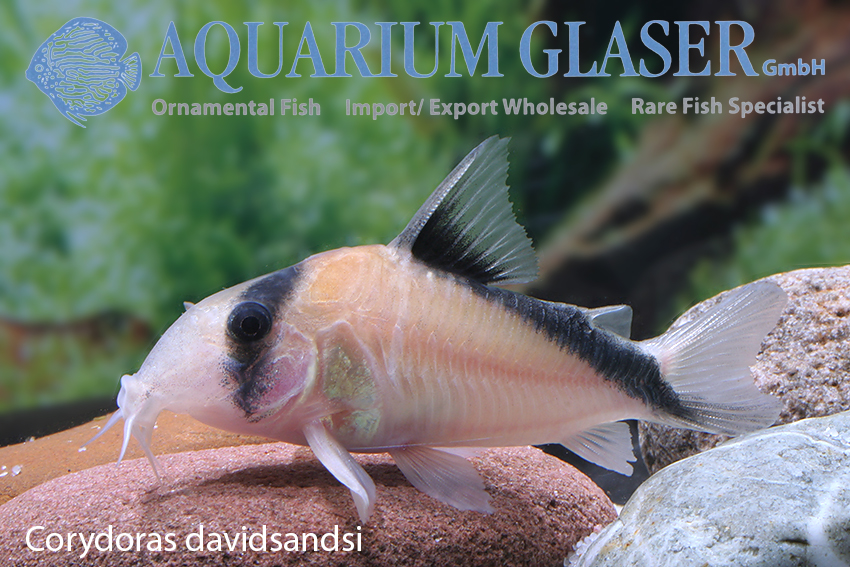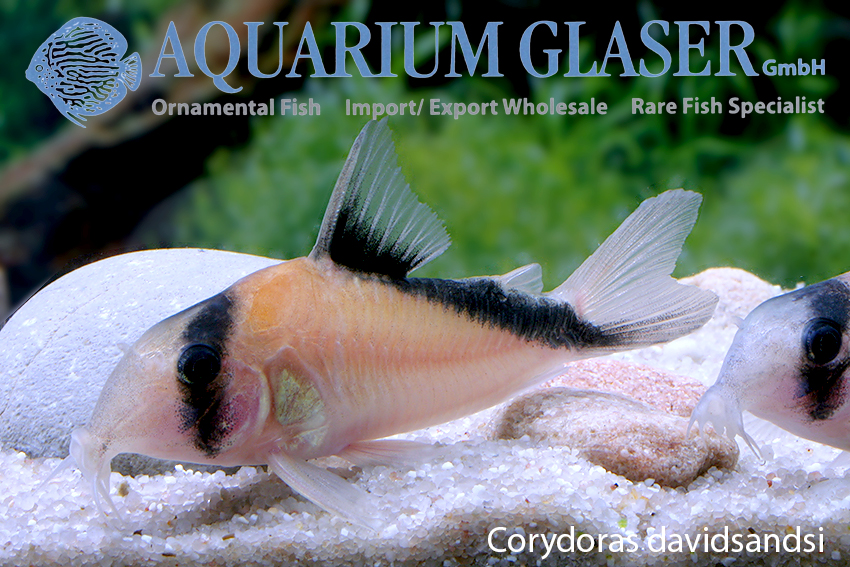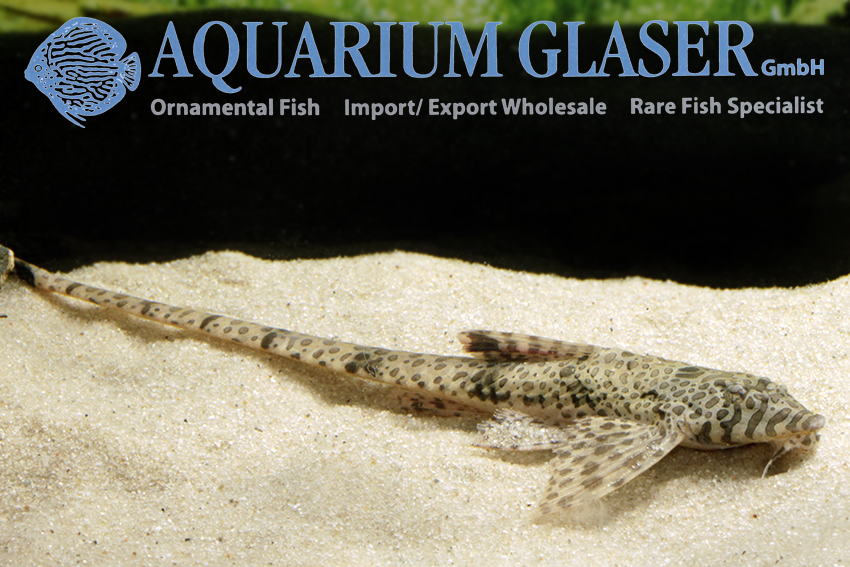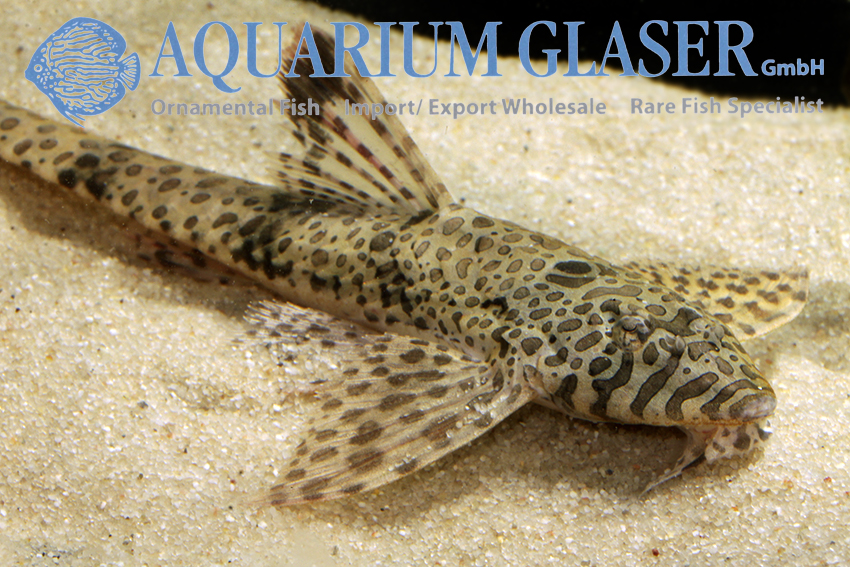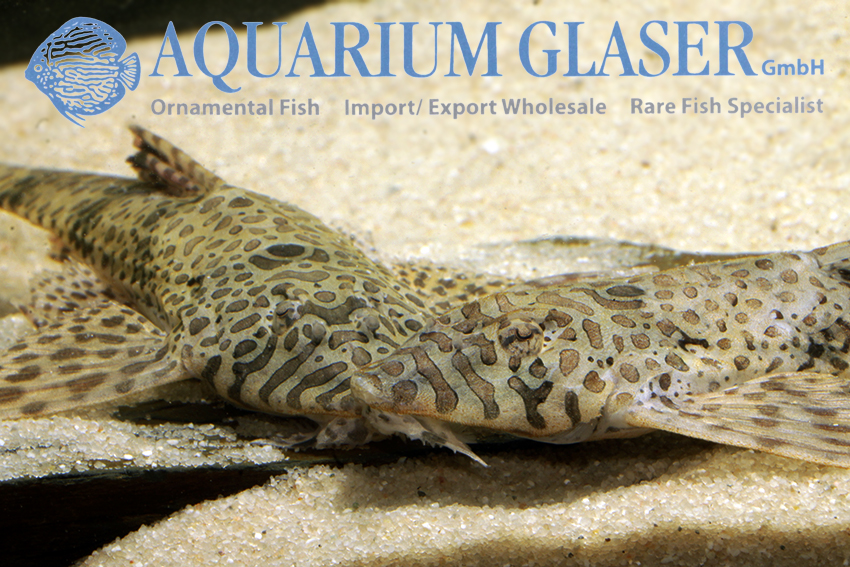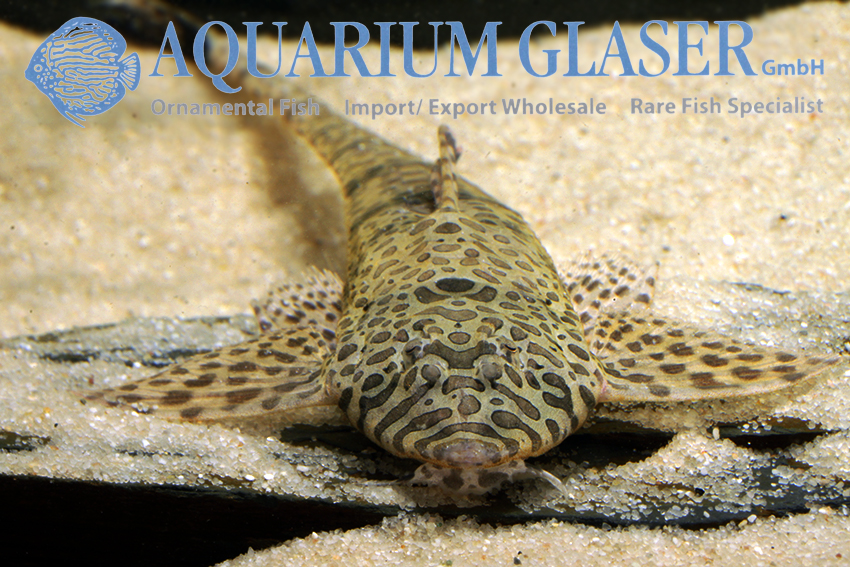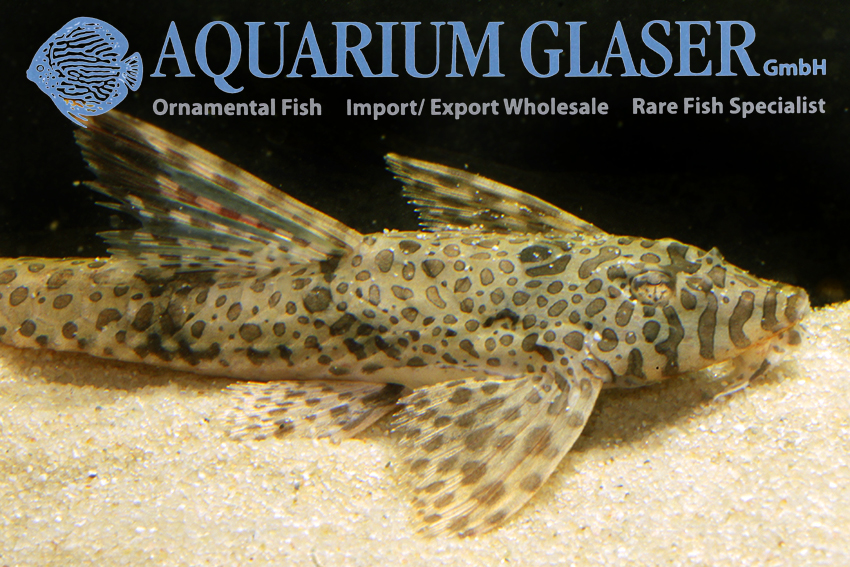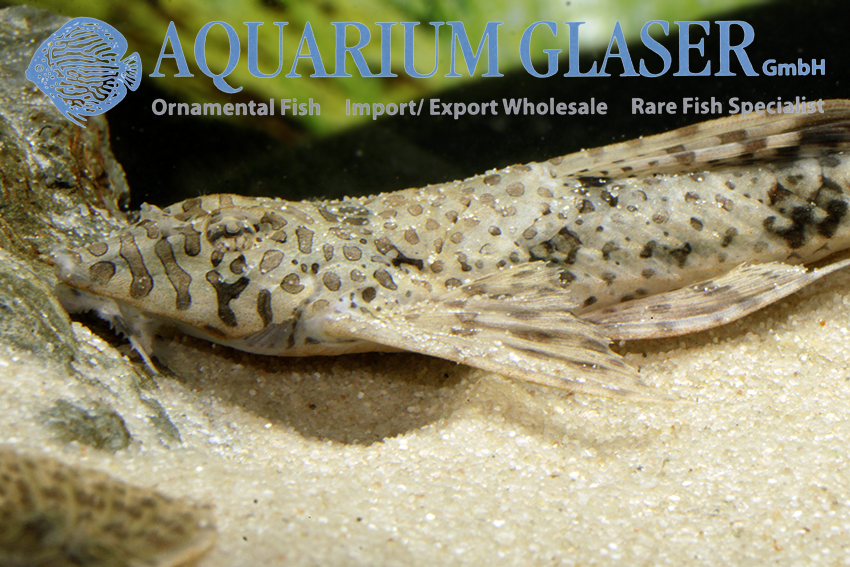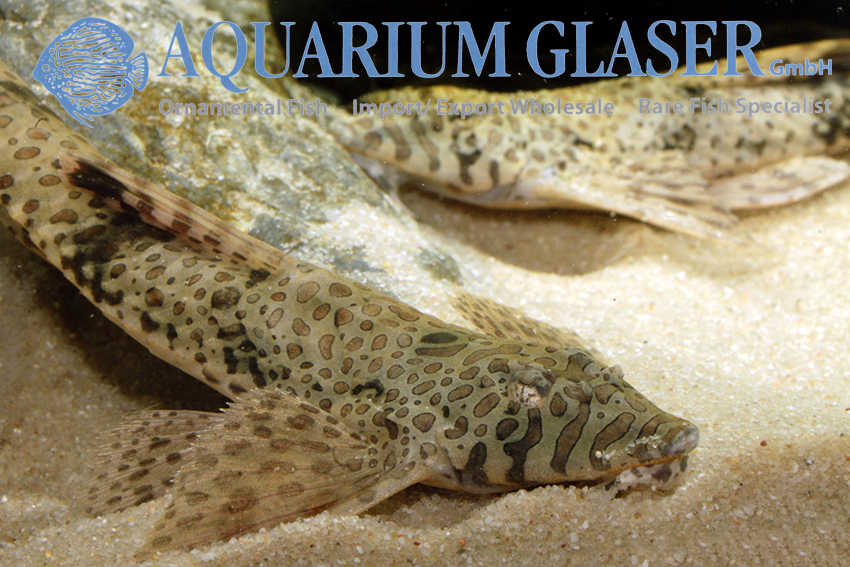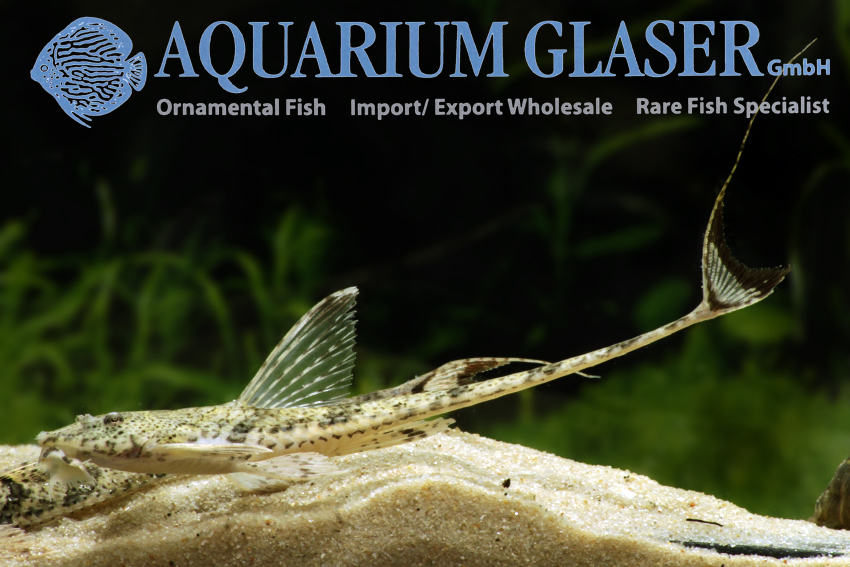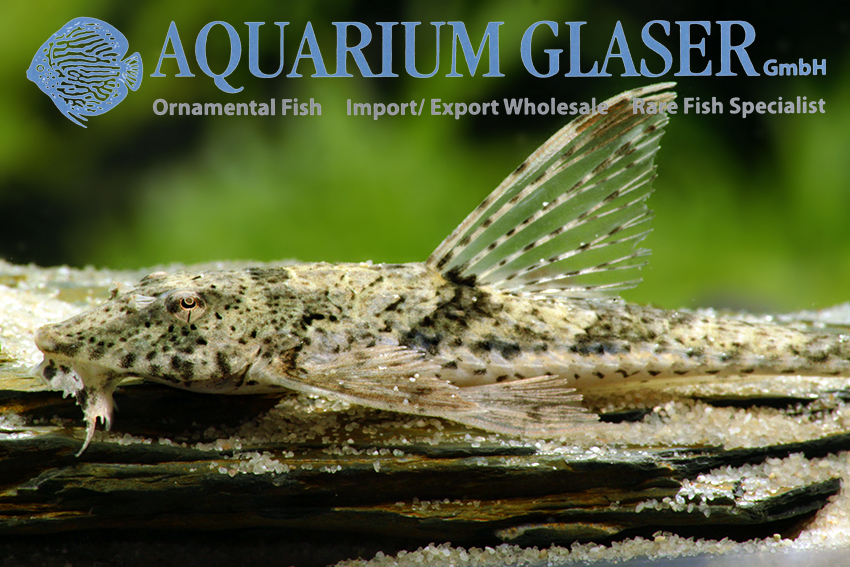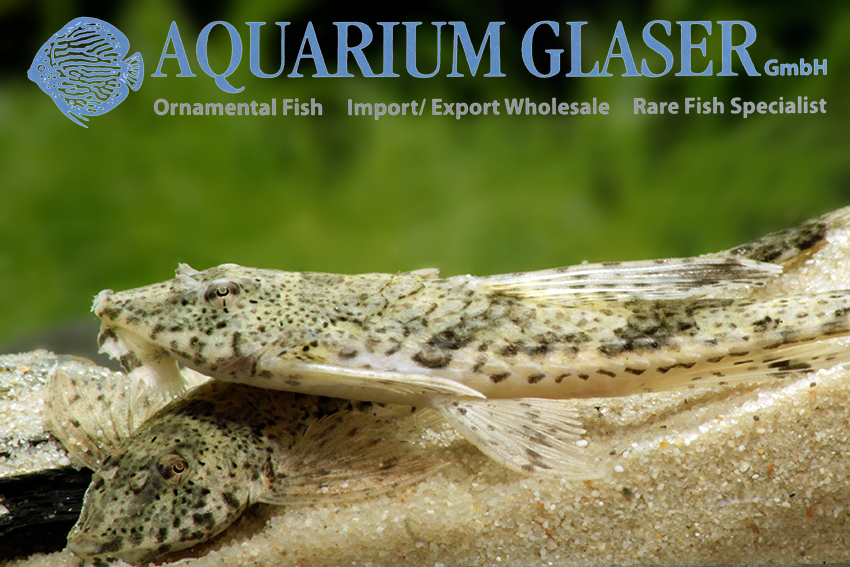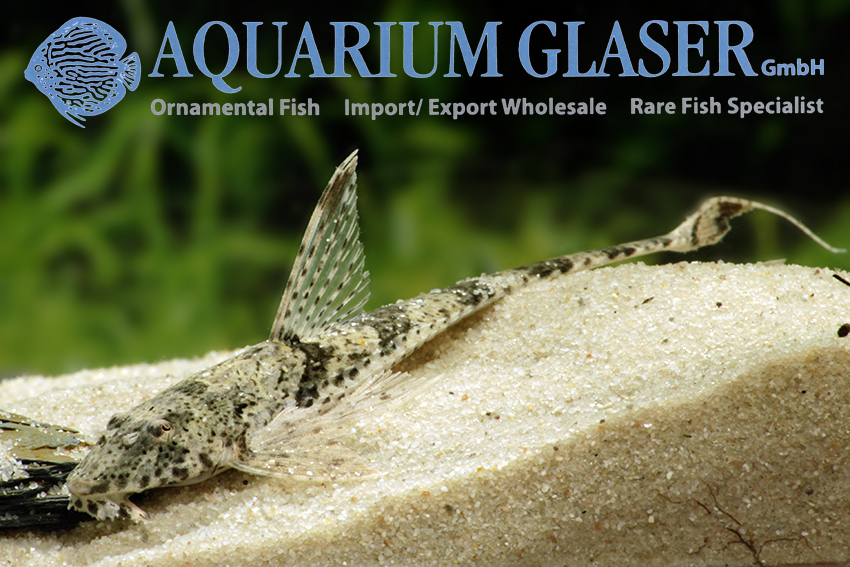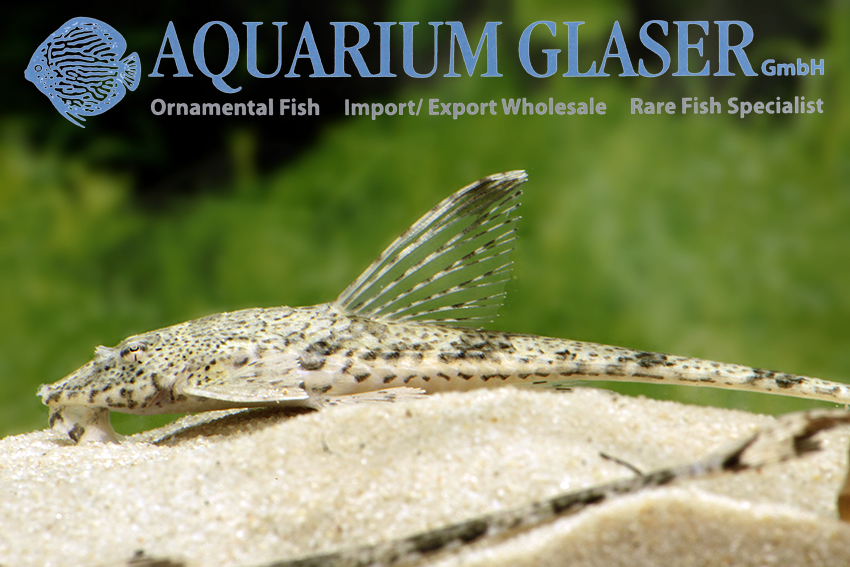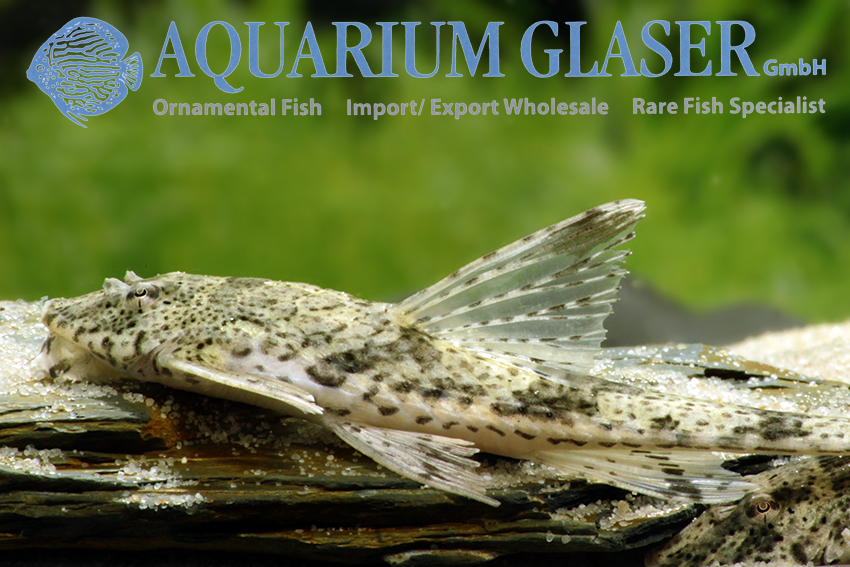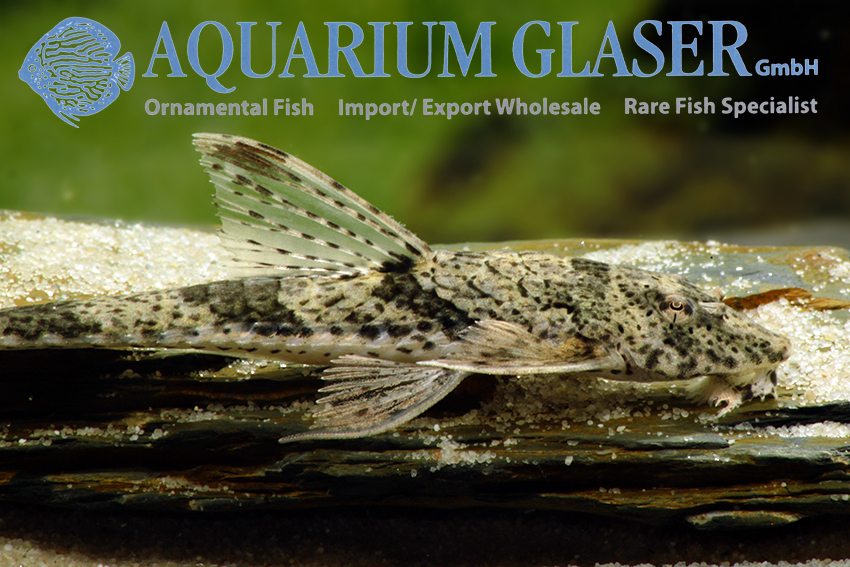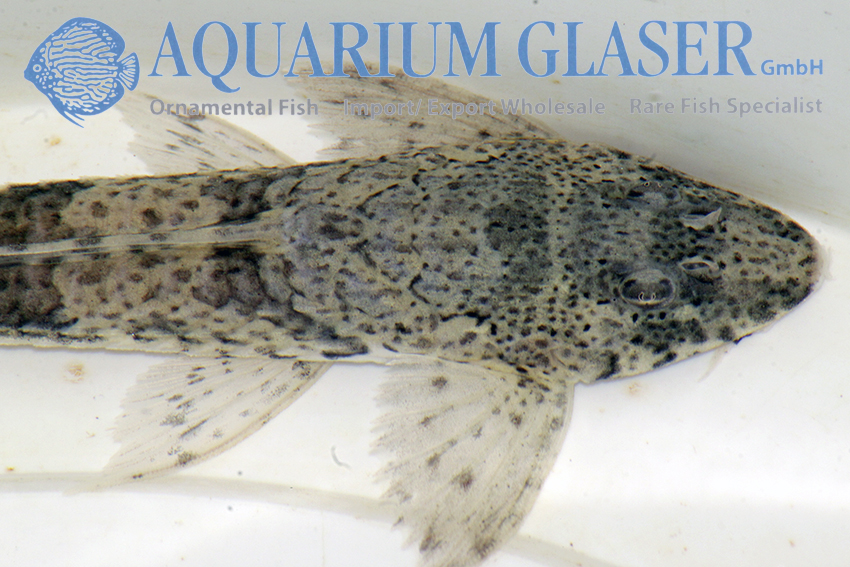One of the most important arguments for importing wild-caught fish for aquaristics is the gain in knowledge it allows. For the majority of small fish species this is only possible by observing living specimens. Without this there is no species knowledge, without species knowledge there is no species conservation.
A wonderful example of the above is the Corydoras, which we received from Brazil a few weeks ago under the name Corydoras davidsandsi. It seemed to us a bit too high-backed and pointy-nosed for C. davidsandsi, but because they are particularly large animals and we had no better name to offer in a hurry, we let it go for the time being.
In the meantime, however, we did further research and came to surprising results. Since the 1980s a very beautiful armored catfish is imported from Colombia, which several scientists identified in scientific studies as Corydoras melini. This Colombian is a round-nosed armored catfish with a black eye band; a broad black dorsal band begins below the dorsal fin and runs down the root of the tail to the lower base of the caudal fin and continues along the lower edge of the caudal fin. We will refer to this color pattern as the “Melini pattern” in the following text.
Nowadays we have learned that there are several developmental lineages in armored catfishes that differ in terms of head shape (and thus food acquisition). Very often there are round-, long- and saddle-snouts with almost identical color pattern, without these species being more closely related to each other; in addition, there are twin species with the same head shape, which, however, occur in spatially far apart areas, therefore at least represent different populations and are usually distinguished by details of coloration. And to make it even more complicated: the head or snout shape is also subject to a certain variation within a population and also changes in the course of individual development (ontogenesis). For example, a very young long snout is recognizable as such only to very experienced specialists, and the relative length of the snout increases considerably during growth.
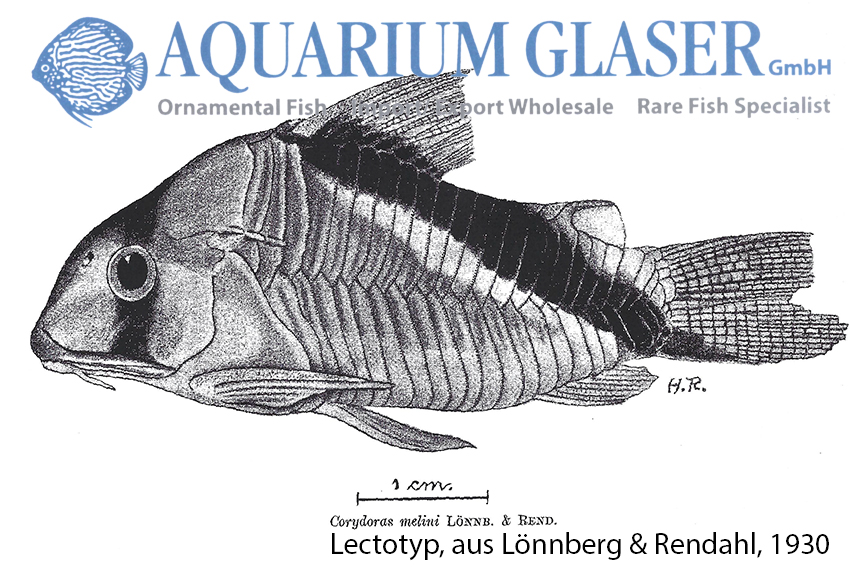
The examination of the first scientific description of Corydoras melini showed that it is clearly a longnose, even if the animals on which the description was based were still relatively small. They were collected in 1924 in the Rio Uaupes in the border area between Brazil and Colombia by D. Melini, in whose honor the species was named at the first description by Lönnberg and Rendahl. Rendahl was not only a zoologist but also a recognized artist and made a detailed drawing of the largest, 44.4 mm (without caudal fin) long animal, which Nijssen & Isbrücker declared to be the lectotype in 1980 (thus it is the reference specimen for all subsequent determinations). Because this work is not so readily available, we reproduce the drawing here for comparison purposes.
An easily recognizable difference between the “false” C. melini from Colombia and the “true” C. melini from the Rio Uaupes (in Colombia the same river is called Vaupes) is the coloration of the dorsal fin. The “false” C. melini has a black triangle in the dorsal fin that extends from the tip of the dorsal fin spine to the posterior lower end of this fin. The dorsal fin triangle is merged in color with the dorsal band. In the “true” C. melini, however, the dorsal fin is transparent and only in the lower, dorsal region is there a flat, black rectangle that is also connected to the dorsal band. Further coloration differences are easily seen in the attached photos. By the way, according to Castro (1987) the “false” C. melini occurs in the Rio Guaviare (Colombia, Orinoco drainage) and in the Rio Caqueta (Amazonian drainage in Colombia, in Brazil the same river is called Japurá).
The following longnose with “melini pattern” and the coloration of the “true” C. melini are currently known: C52 (Peru), C85 (Peru), C138 (Peru), C159 (Brazil: Rio Purus), CW89 (Colombia, Rio Vaupes), CW106 (Colombia, Rio Cuduyaria, a tributary of Rio Vaupes). Of these, ours, sent as C. davidsandsi, correspond best to C159 and from our point of view CW89 is the fish closest to the first description of C. melini.
Finally, a word about C. davidsandsi: this species occurs in the Rio Negro drainage (Rio Unini) in Brazil and has the “melini pattern”, but the nuchal shield between the eye patch and the dorsal fin base is colored pale orange-red, which places it more in the relationship of Corydoras adolfoi, C. burgessi, C. imitator and similar species.
Text & Photos: Frank Schäfer
Literature cited:
Castro, D. M. (1987): The fresh-water fishes of the genus Corydoras from Colombia, including two new species (Pisces, Siluriformes, Callichthyidae). Boletin Ecotrópica. No. 16: 23-57, Pls. 1-11.
Lönnberg, E. & H. Rendahl (1930): Eine neue Art der Gattung Corydoras. Arkiv för Zoologi v. 22 A (no. 5): 1-6.
Nijssen, H. & I. J. H. Isbrücker (1980): A review of the genus Corydoras Lacépède, 1803 (Pisces, Siluriformes, Callichthyidae). Bijdragen tot de Dierkunde v. 50 (no. 1): 190-220.
C- and CW-numbers: www.corydorasworld.com
